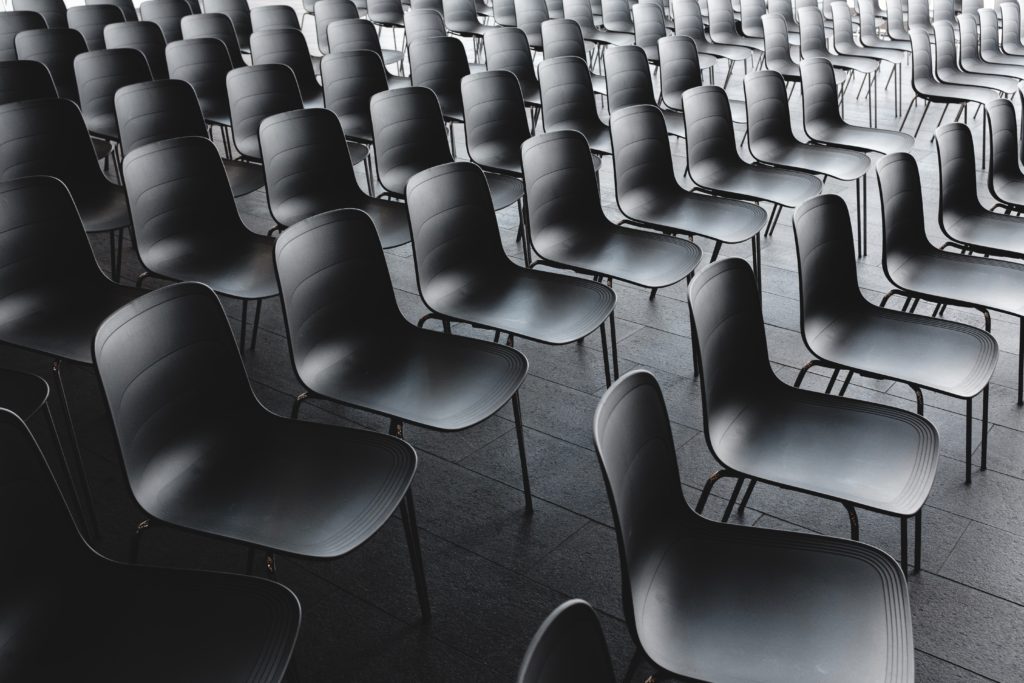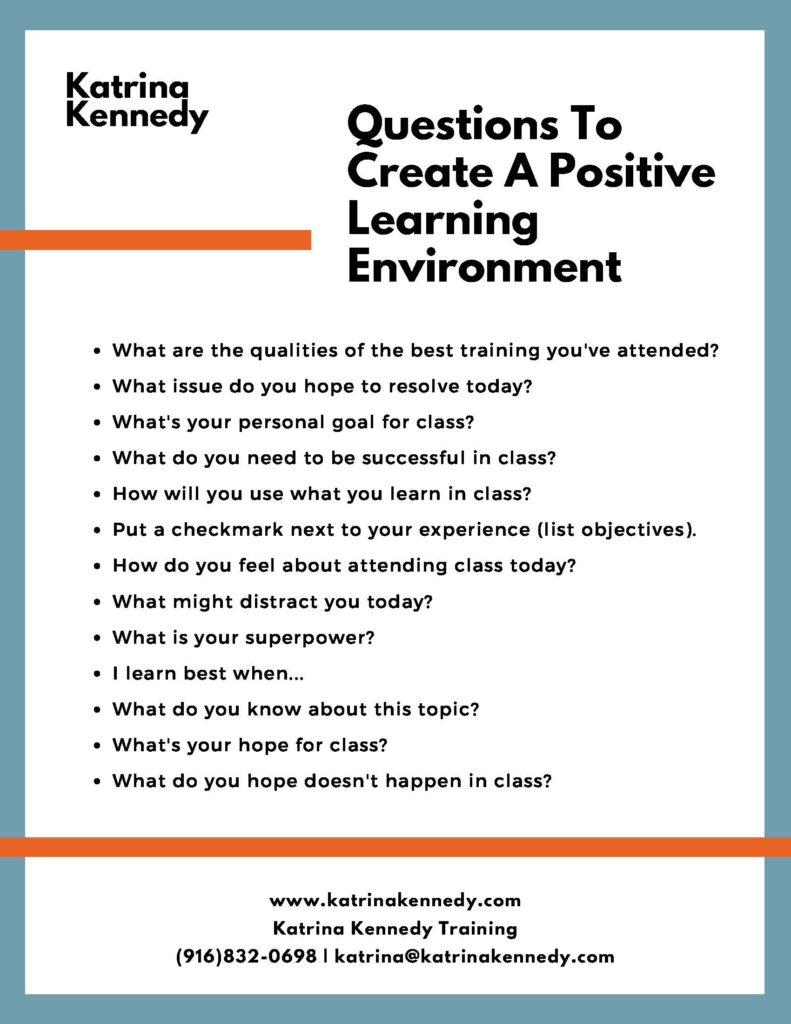
You walk in and scan the room for THE SPOT to plant yourself for the next seven hours. The room’s off white, windowless walls loom around you.
This is going to be a long day.
You take a deep breath, find a seat, and settle in. You shift around a bit, skim through the workbook in front of you, and take a long drink of the tepid coffee you brought with you. In an effort to avoid looking at your phone, you do it again.
You get your phone out. It’s habit.
A few other people filter in, scanning the room for familiar faces before they select tables, leaving a canyonwide space between their mobile devices and yours. Finally the poor soul enters who must cross the divide, choosing a seat closer to you than they really want. You make eye contact, smile, and await the inevitable awkward exchange.
We’ve all been there. Those uncomfortable first moments as a learner in a new training space.
It doesn’t have to be this way though.
As the trainer, your choices before class help set a positive, comfortable tone for your entire program — whether a few hours or a few days.
I like to think about the beginning of class like welcoming people into my home for a party. There are two essential ingredients that create a positive first impression.
Ambience
Activity
These little touches don’t cost much and create a better learning space.
Create A Little Ambience
If you step into my home for a party, the first thing you will hear is a curated playlist. Okay, by curated I mean, selected the day before in a quick dinner conversation with my husband. Something I like to listen to, but not too loud nor too soft.
My classroom playlist of choice is The Essential Glen Miller. It’s old. It’s recognizable. It’s reliable. Almost everyone has some connection to the music of Glen Miller, from Disneyland rides to memories of their grandparents. I’m always surprised how many people comment about the music. And to date, no one has complained.
Music plays until the moment class starts. It becomes a perfect signal that class is going to begin.
When learners look around the room they are going to find toys in buckets on the tables. No explanation or invitation needed, just toys. Tucked into those buckets are pencils, pens, and highlighters.
Around the room, old school “flip chart” pages are placed with a question on each. About six, less if the class is short, more if the class is longer. More on the posters in a moment.
The inevitable PowerPoint slide will be shown with a welcoming photo and a quick direction for the second element of creating a great environment.
Give Them An Activity
If you come to my house for a party you’ll hear the music playing and be greeted with a beverage and a snack. You immediately have something to do as other guests arrive.
If you want to engage learners in your training, you have to give them something to do. We all know that. What they do when they arrive helps set the tone for your entire day.
Obviously you want your learners to settle into their spot and get comfortable. People arrive at varying times, so some early arrivals will have more time to sit.
Yes, they could get on their phones and check email, text, do some work, and balance a budget or two. I’m selfish though. When learners step into the classroom space, I want them to leave as much of their other life behind so they can focus on what they are about to do. Learn. I want to minimize distractions (the phone and all that lurks within it) and maximize participation.
On a slide in front of the room, I give simple directions.
“Add your answers to the charts on the wall.”
This simple request nudges people to get up and engage their brains. It also begins conversation between learners as they share markers or begin to see each other’s responses.
Your questions could include:
- What are the qualities of the best training you’ve attended?
- What issue do you hope to resolve today?
- What’s your personal goal for class?
- What do you need to be successful in class?
- How will you use what you learn in class?
Download a list of questions here.

This simple activity gives learners something to do when they arrive and gives you a lot of information about everyone. No class time is necessary to write or review the answers.
What Steps Will You Take?
When you step into your next class, look around. What small things could you add to create ambience and a little activity? They don’t need to take much time or cost a lot. They will help your learners to ready themselves for learning.
Do you have something you love to do to create ambience and activity? I’d love to hear what works for you in the comments below.

This is a great article. I’m looking forward to attending the Trainer as Facilitator of Learning in November!
So glad you like it Susan! Look forward to having you in class next month, it’s one of my favorites!
Wow. I love these ideas. I am going to add music and an opening activity to my workshops to create ambiance. Do you suggest something similar for webinars? I don’t think I can change the opening music, which isn’t great but maybe something more creative than just asking people where they’re from?
I think the ideas absolutely work for webinars too! It’s so important to maintain engagement during a webinar. You could start with a survey question before you begin or just a simple slide with a question for them. Thanks for stopping by!